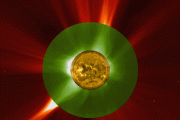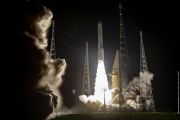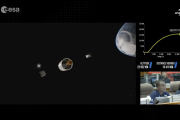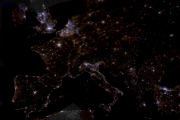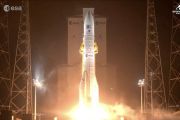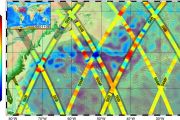
Copernical Team
Back on Track: Sols 3871-3872
 We started planning today with the great news that our drive was successful! This put us in a perfect position for our split touch-and-go plan - lots to see, and no need to worry that we might be on unsteady footing, like we were on Friday.
Our two nearby targets are bedrock blocks: the nodular bedrock 'Lousoi,' which we'll be investigating up close (the 'touching' in the touch-and-go) wit
We started planning today with the great news that our drive was successful! This put us in a perfect position for our split touch-and-go plan - lots to see, and no need to worry that we might be on unsteady footing, like we were on Friday.
Our two nearby targets are bedrock blocks: the nodular bedrock 'Lousoi,' which we'll be investigating up close (the 'touching' in the touch-and-go) wit Zhurong rover detects extremely weak magnetic fields on surface of Mars' Utopia Basin
 A joint research team led by Prof. DU Aimin from the Institute of Geology and Geophysics of the Chinese Academy of Sciences (IGGCAS) has found extremely weak magnetic fields during the Zhurong rover's first 1-km traverse on Mars. This indicates no detectable magnetization anomalies below Zhurong's landing site.
The researchers utilized two fluxgate magnetometers aboard the Zhurong rover to
A joint research team led by Prof. DU Aimin from the Institute of Geology and Geophysics of the Chinese Academy of Sciences (IGGCAS) has found extremely weak magnetic fields during the Zhurong rover's first 1-km traverse on Mars. This indicates no detectable magnetization anomalies below Zhurong's landing site.
The researchers utilized two fluxgate magnetometers aboard the Zhurong rover to Advanced space technology enabling 2024 ESCAPADE mission to Mars
 Advanced Space, an industry frontrunner in the creation of cutting-edge space technology, is set to make significant strides in deep space and planetary exploration through its collaboration with the University of California Berkeley Space Sciences Laboratory (SSL).
The partnership centers around NASA's forthcoming Escape and Plasma Acceleration and Dynamics Explorers (ESCAPADE) mission, s
Advanced Space, an industry frontrunner in the creation of cutting-edge space technology, is set to make significant strides in deep space and planetary exploration through its collaboration with the University of California Berkeley Space Sciences Laboratory (SSL).
The partnership centers around NASA's forthcoming Escape and Plasma Acceleration and Dynamics Explorers (ESCAPADE) mission, s France tests hypersonic glider for first time
 France has for the first time tested a hypersonic glide vehicle, a warhead that defies interception thanks to its unpredictable trajectory, a source with knowledge of the test said Tuesday.
The speed of HGVs can exceed Mach 5, or 6,000 kilometres per hour (3,730 mph). The technology is being developed or deployed by a small number of countries that includes China, Russia and the United State
France has for the first time tested a hypersonic glide vehicle, a warhead that defies interception thanks to its unpredictable trajectory, a source with knowledge of the test said Tuesday.
The speed of HGVs can exceed Mach 5, or 6,000 kilometres per hour (3,730 mph). The technology is being developed or deployed by a small number of countries that includes China, Russia and the United State Leidos' MACH-TB program successfully completes 1st test launch
 Leidos (NYSE: LDOS), a Fortune 500 technology, engineering and science solutions and service leader, announced its Dynetics team has successfully completed a large-scale test for its MACH-TB program. The Multi-Service Advanced Capability Hypersonic Test Bed (MACH-TB) program is meant to increase the speed of testing for all commercially available hypersonic systems. The program also called for t
Leidos (NYSE: LDOS), a Fortune 500 technology, engineering and science solutions and service leader, announced its Dynetics team has successfully completed a large-scale test for its MACH-TB program. The Multi-Service Advanced Capability Hypersonic Test Bed (MACH-TB) program is meant to increase the speed of testing for all commercially available hypersonic systems. The program also called for t Virginia Tech leads multi-institution research on polymeric solid fuel combustion
 Fascination surrounding spaceflight and rockets is at an all-time high. Sites near launchpads draw crowds of spectators, eager to witness the flash of fire and feel the vibrations as the rumble of the motor becomes a roar. People, squinting and craning their necks to watch the rocket hurtle out of sight, aren't likely thinking about the science behind the propulsion that makes it all possible.
Fascination surrounding spaceflight and rockets is at an all-time high. Sites near launchpads draw crowds of spectators, eager to witness the flash of fire and feel the vibrations as the rumble of the motor becomes a roar. People, squinting and craning their necks to watch the rocket hurtle out of sight, aren't likely thinking about the science behind the propulsion that makes it all possible. Four teams win prizes to advance energy technology for moon missions
 NASA has selected four teams to advance to the final level of the agency's Watts on the Moon Challenge, which seeks solutions to transmit and store energy on the lunar surface.
NASA is working to establish a permanent human presence on the Moon and beyond. The next major step in this effort will be Artemis II, the first crewed test flight to the Moon since the Apollo program. Long-term exp
NASA has selected four teams to advance to the final level of the agency's Watts on the Moon Challenge, which seeks solutions to transmit and store energy on the lunar surface.
NASA is working to establish a permanent human presence on the Moon and beyond. The next major step in this effort will be Artemis II, the first crewed test flight to the Moon since the Apollo program. Long-term exp AST SpaceMobile and Maritime Launch Services Boost Capital with Stock Offerings
 In a week of significant fundraising for space companies, AST SpaceMobile, Inc. and Maritime Launch Services Inc. have separately announced capital raising ventures.
AST SpaceMobile, Inc. (NASDAQ: ASTS) disclosed the pricing and upsizing of its previously announced public offering of Class A common stock, par value $0.0001 per share. The company plans to sell 12,500,000 shares of Class A
In a week of significant fundraising for space companies, AST SpaceMobile, Inc. and Maritime Launch Services Inc. have separately announced capital raising ventures.
AST SpaceMobile, Inc. (NASDAQ: ASTS) disclosed the pricing and upsizing of its previously announced public offering of Class A common stock, par value $0.0001 per share. The company plans to sell 12,500,000 shares of Class A Spacesuit design: João Montenegro
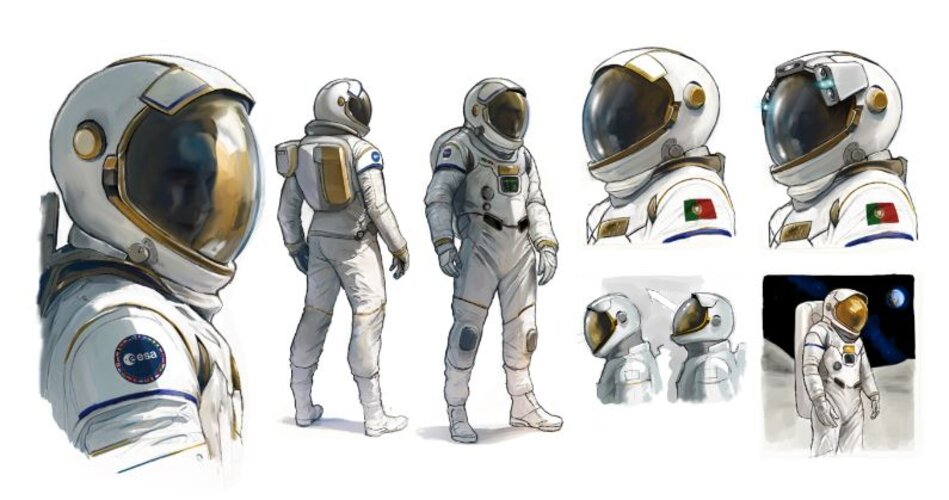 Image:
Spacesuit design: João Montenegro
Image:
Spacesuit design: João Montenegro 
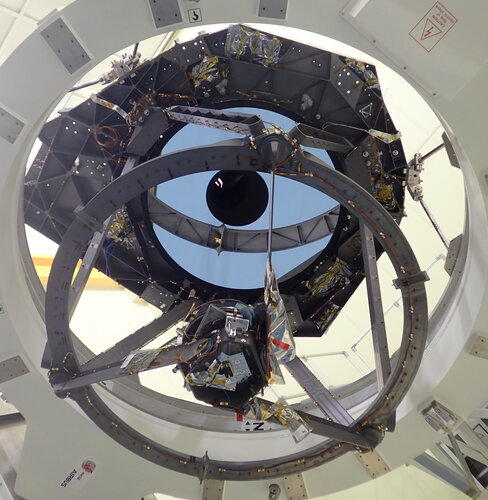 Image:
Eye of Euclid
Image:
Eye of Euclid 













